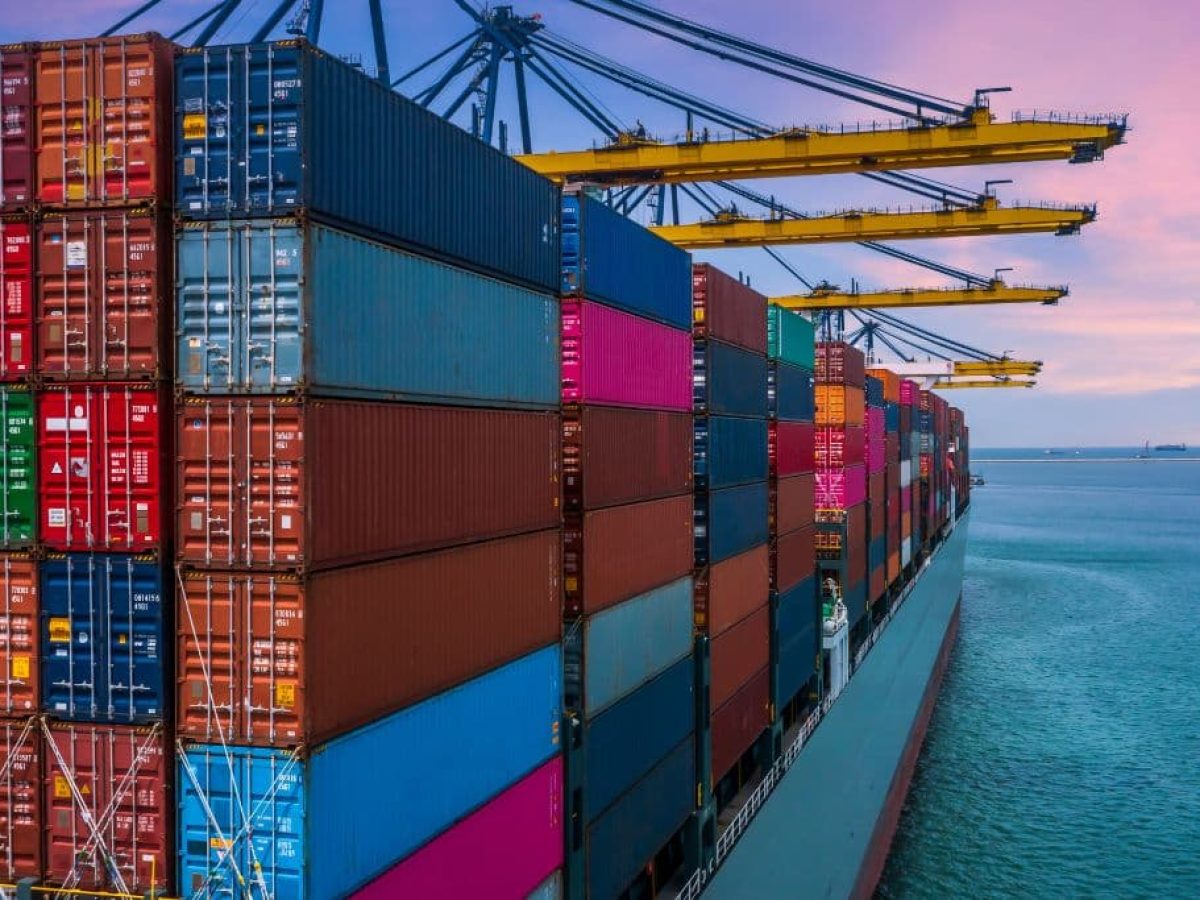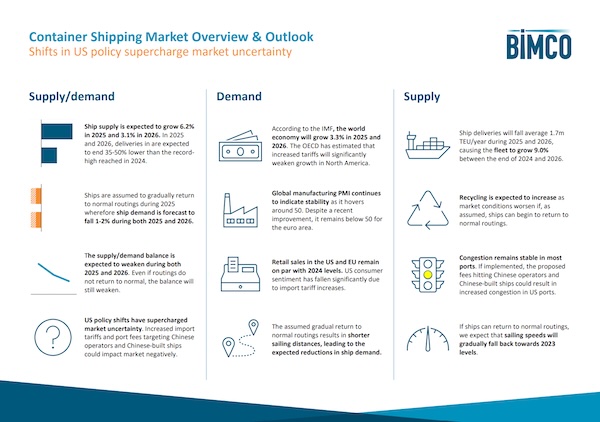
BIMCO Container Shipping Outlook: Shifts in US policy supercharge market uncertainty
LONDON : Since US President Trump took office for a second time, US geopolitical, trade and shipping policy shifts have supercharged market uncertainty while appearing likely to become key drivers of future supply and demand developments.

In our base scenario, we forecast a weakening of the supply/demand balance during both 2025 and 2026. We assume that ships can gradually return to normal Red Sea and Suez Canal routings during 2025, leading to shorter sailing distances and thus a fall in ship demand.
However, even if ships cannot return to normal routings, the supply/demand balance is expected to weaken. In this situation, ship demand is estimated to grow 2-3% per year, whereas supply will grow faster.
For our alternative scenario, we adjust our estimates to the Organisation of Economic Cooperation and Development’s (OECD) latest economic forecast, which lowers estimated demand growth by 0.2 percentage points per year compared to our base scenario.
The OECD’s forecast adjusts for the bilateral tariff increases between Canada and the US and Mexico and the US, lowering the economic growth forecast for North America by 0.7-0.8 percentage points during 2025 and 2026. However, the OECD forecast does not consider the additional US import tariff increases on Chinese goods, on steel and aluminium nor the retaliatory tariff increases hitting US products in China and the European Union.
The impact of the threatened reciprocal tariffs that the US may announce in April are of course not reflected either. It is too early to say how these additional increases in US import tariffs could impact the market.
However, considering the estimated impact on North American economic growth of the trade war developing between the US and Canada and Mexico, we fear that cargo volume growth could end 0.5 percentage points per year lower than in our base case, a reduction of up to 17% compared to our base scenario.
Unfortunately, the supply side may also be affected by proposed US policies to charge Chinese operators and Chinese-built ships million-dollar fees for calling US ports. If implemented, it could fully transform current market structures.
Chinese operators may become uncompetitive in US trades and reduce capacity deployed in those trades, while operators with Chinese ships and/or orders for Chinese ships may adjust services to minimise the number of US port calls. A significant shift of market shares between Chinese and non-Chinese operators could ensue if Chinese operators focus on other trade lanes to regain the cargo volumes they may lose in US trades.
At the same time, concentrating US imports and exports in fewer ports could significantly increase congestion. Last but not least, the policy could hurt the asset prices and time charter rates for Chinese-built ships, as by having these ships in their fleet, operators will face additional fees when calling US ports. Even if the proposed fees are not implemented, second-hand ship prices may still begin to fall if the supply/demand balance develops as we forecast.
Since the beginning of 2025, second-hand prices for five-year-old ships have increased 6% compared to December 2024, supported not least by a continued rise in time charter rates of 5% during the same period.
Time charter rates have so far been insulated from falls in freight rates as existing long-term charters limit the number of ships available for new charters. Over time, the charter rates must be expected to mirror the development in freight rates but a full realignment between the two may take time.
When time charter rates begin to fall, we expect that second-hand prices will follow. On the other hand, newbuilding prices have already trended slightly downwards in recent months along with shipyards’ global order books. We maintain our expectation that the peak of newbuilding prices has been reached but how quickly prices move downwards will depend on future contracting within all shipping sectors.
Despite what appears to be solid cargo volume growth at the beginning of the year, spot freight rates for Shanghai exports (SCFI) have already fallen 46% since the beginning of the year and average Chinese export rates (CCFI) are down 23%.
This weakness points to the fact that capacity deployed by liner operators has grown faster than cargo volumes. This apparent market imbalance may also already be pointing to a weakening of China-US volumes. Liner operators may reduce deployed capacity to improve the future market balance.
Historically, however, they have not been very successful at this in a weakening market. We therefore expect that freight rates will continue to fall. Current freight rates remain 40-60% higher than in 2019 before the COVID pandemic and it may take some time before freight rates again approach those levels, but we do not consider it unlikely that they may get there before the end of 2026.
Source: BIMCO
